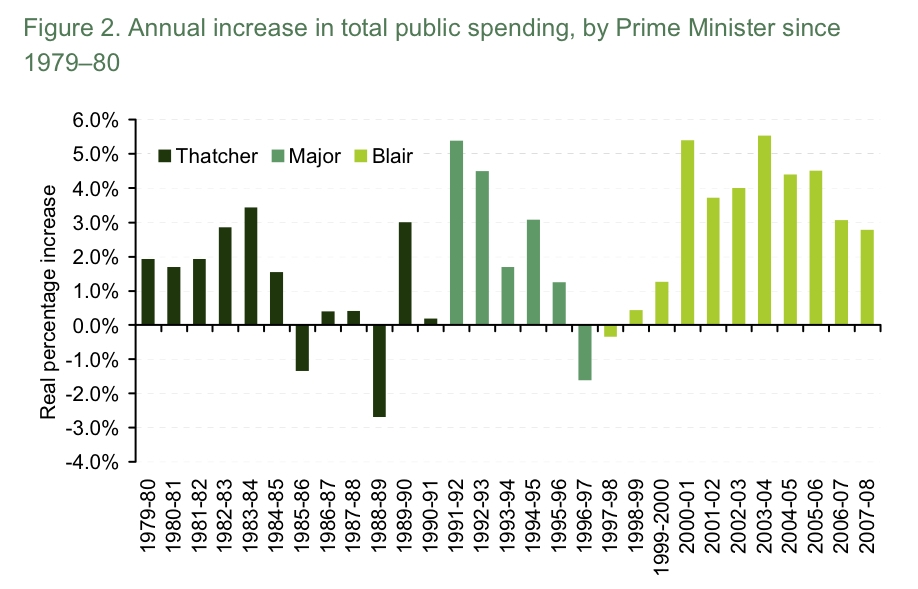There’s been some hubbub on the good ol’ blogosphere about Darling’s claim that Labour spending cuts would be “deeper and tougher” than Thatcher’s. Did Thatcher actually cut spending? What would that indicatate about Labour’s plans? And so on.
Part of the confusion is caused by the different metrics that are referred to as “spending”. So here’s a quick guide to what Darling might have had in mind:
OPTION 1: Real-terms total spending. As the below graph from the IFS shows (taken from this excellent blogpost by the FT’s Alex Barker), real-terms total public spending only fell in two years of the Thatcher premiership. In all the other years it rose. Indeed, spending increased by an average of 1.1 percent a year across the Thatcher premiership:

By contrast, the IFS calculate that total spending will rise by around 0.4 percent a year during the first term of a Labour Parliament.
OPTION 2: Departmental spending. You can strip items like social security payments and debt interest out of total public spending, to come up with something which approximates the cash that government departments will get to spend. As Nick Robinson highlighted in his original blogpost, the IFS has already done the sums on this, and discovered that departmental spending will fall at its fastest rate since the 1970s:
OPTION 3: Total spending as a percentage of GDP. As the below graph from the Appendix C of the Red Book shows, total spending was cut quite significantly as a share of GDP in the Thatcher years. Indeed, the forecasts for the next Parliament have it falling less deeply, but just as steeply, as it did between 1982 and 1989. So if Darling had this metric in mind, then he’s either referring to more spending cuts to come after 2015, or he’s implying that the projections in the Budget aren’t deep enough. Either way, he would telling us something that we don’t officially know:“[I]f we subtract spending on welfare and debt interest then we estimate that the rest of public spending would be cut in real terms by an average of 1.4 percent a year compared to an average increase of 0.7 percent in the Thatcher era. We have not seen five years with an average annual real cut as big as this since the mid-1970s.”

It is testament to the impenetrability of the Budget that there can so much confusion and uncertainty about public spending only days after it has been delivered. Darling’s words have stark rammifications for every taxpayer, every person, in the country. So it is important that he clarifies them.






Comments